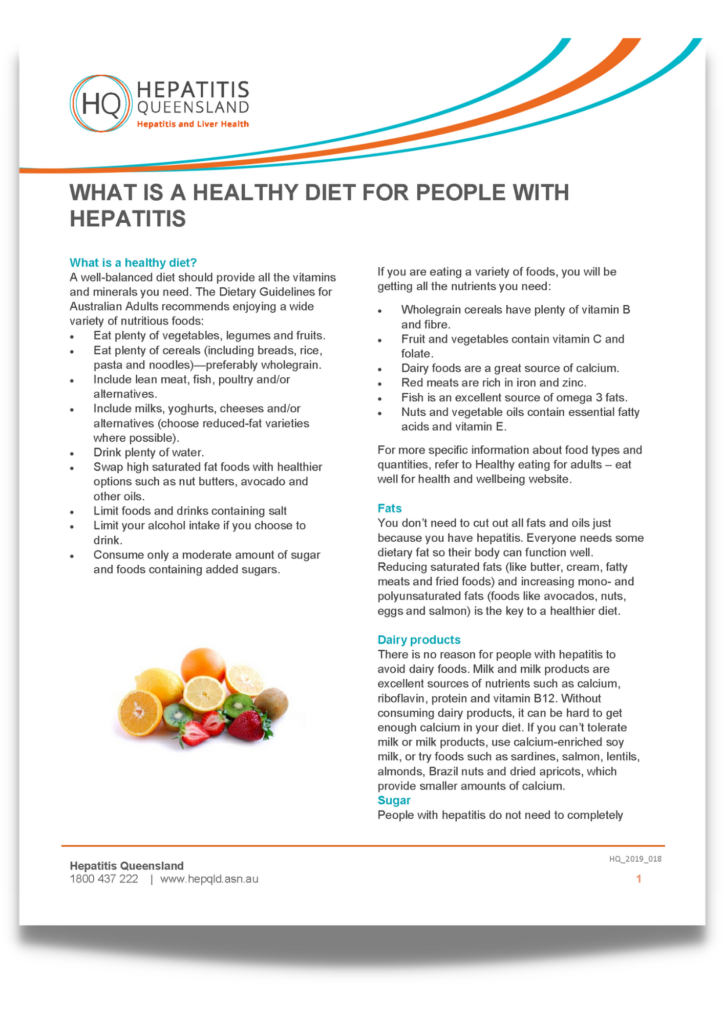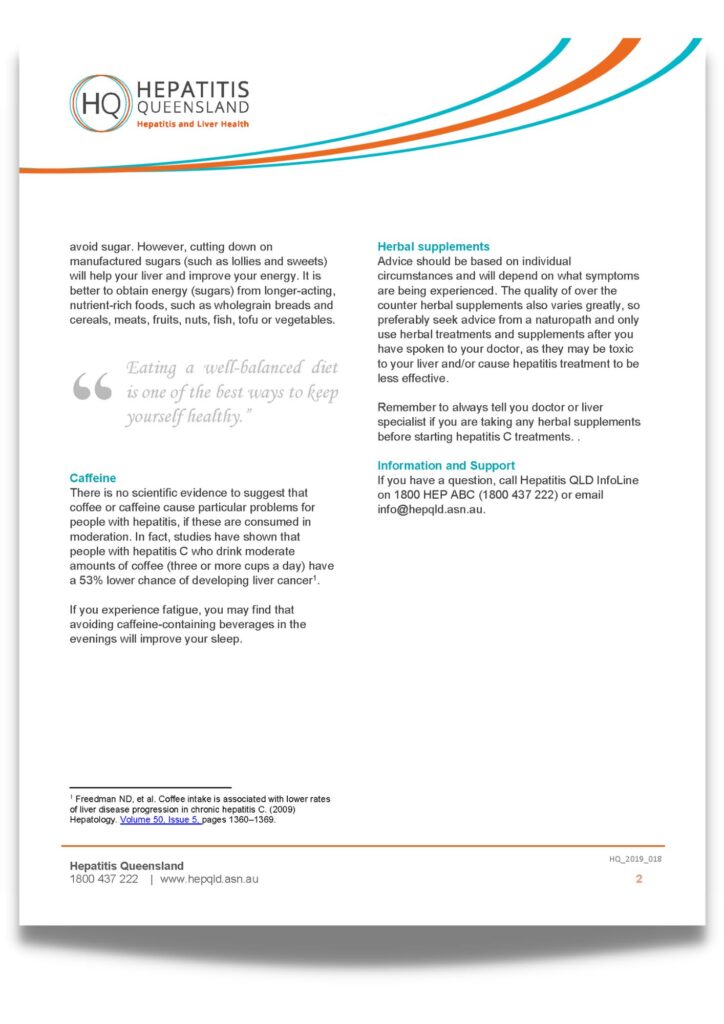What is a healthy diet for someone with hepatitis
What is a healthy diet for someone with hepatitis
What is a healthy diet?
A well-balanced diet should provide all the vitamins and minerals you need if you are living with hepatitis B or hepatitis C. The Dietary Guidelines for Australian Adults recommend enjoying a wide variety of nutritious foods:
- Eat plenty of vegetables, legumes and fruits
- Eat plenty of cereals (including breads, rice, pasta and noodles)—preferably wholegrain
- Include lean meat, fish, poultry and/or alternatives
- Include milks, yoghurts, cheeses and/or alternatives (choose reduced-fat varieties where possible)
- Drink plenty of water
- Swap high saturated fat foods with healthier options such as nut butters, avocado and other oils
- Limit foods and drinks containing salt
- Limit your alcohol intake if you choose to drink
- Consume only a moderate amount of sugar and foods containing added sugars.
If you are eating a variety of foods, you will be getting all the nutrients you need:
- Wholegrain cereals have plenty of vitamin B and fibre
- Fruit and vegetables contain vitamin C and folate
- Dairy foods are a great source of calcium
- Red meats are rich in iron and zinc
- Fish is an excellent source of omega-3 fats
- Nuts and vegetable oils contain essential fatty acids and vitamin E.
For more specific information about food types and quantities, refer to the Eat For Health website.
Fats
You don’t need to cut out all fats and oils just because you have hepatitis. Everyone needs some dietary fat so their body can function well. Reducing saturated fats (like butter, cream, fatty meats and fried foods) and increasing mono- and polyunsaturated fats (foods like avocados, nuts, eggs and salmon) is the key to a healthier diet.
Dairy products
There is no reason for people with hepatitis to avoid dairy foods. Milk and milk products are
excellent sources of nutrients such as calcium, riboflavin, protein and vitamin B12. Without consuming dairy products, it can be hard to get enough calcium in your diet. If you can’t tolerate milk or milk products, use calcium-enriched soy milk, or try foods such as sardines, salmon, lentils, almonds, Brazil nuts and dried apricots, which provide smaller amounts of calcium.
Sugar
People with hepatitis do not need to completely avoid sugar. However, cutting down on manufactured sugars (such as lollies and sweets) will help your liver and improve your energy. It is better to obtain energy (sugars) from longer-acting, nutrient-rich foods, such as wholegrain breads and cereals, meats, fruits, nuts, fish, tofu or vegetables.
Eating a well-balanced diet is one of the best ways to keep yourself healthy.
Caffeine
There is no scientific evidence to suggest that coffee or caffeine cause particular problems for people with hepatitis, if these are consumed in moderation. In fact, studies have shown that people with hepatitis C who drink moderate amounts of coffee (three or more cups a day) have a 53% lower chance of developing liver cancer.
If you experience fatigue, you may find that avoiding caffeine-containing beverages in the evenings will improve your sleep.
Herbal supplements
Advice should be based on individual circumstances and will depend on what symptoms are being experienced. The quality of over the counter herbal supplements also varies greatly, so preferably seek advice from a naturopath and only use herbal treatments and supplements after you have spoken to your doctor, as they may be toxic to your liver and/or cause hepatitis treatment to be less effective.
Remember to always tell you doctor or liver specialist if you are taking any herbal supplements before starting hepatitis C treatments.
Information and Support
If you have a question, call Hepatitis Queensland Infoline on 1800 437 222 or email info@hepqld.asn.au.


